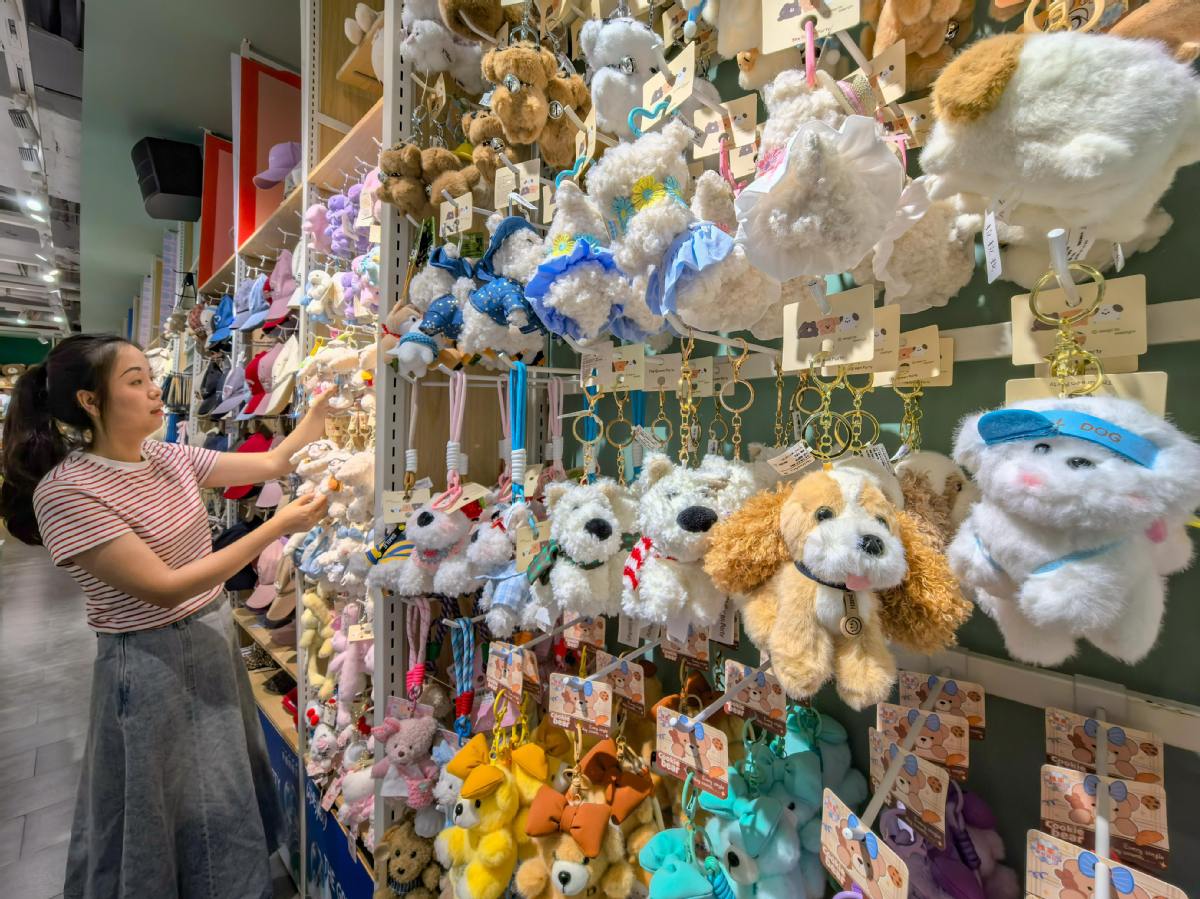
As part of the new trends emerging in the Chinese consumption sector, purse ornaments are demonstrating how intellectual property has transformed from a simple cultural symbol, to a core engine driving brand innovation and reputation.
Purse ornaments are dolls, badges and figurine pendants derived from well-known IPs, that are small enough to be hung on bags and are used mainly by young consumers as a social currency to showcase personality and identity.
With the popular furry Labubu dolls going viral, sharing purse ornament outfits on the internet is gaining traction. On social media platforms, consumers spontaneously showcase their purse ornaments, and there is even an outfit formula. A lot of ornament lovers soon get acquainted, some of whom exchange their purse ornaments voluntarily. With a small symbol, they are able to expand their social circle.
Starting from Labubu, the trend quickly expanded to well-known IPs including Disney, Sanrio and Jellycat, which have all been applied to purse ornaments. A lot of international fashion brands and luxury brands, such as Coach, Loewe and Miu Miu, are also starting to develop purse ornaments.
"Popular commodities no longer meet the demand of new consumption groups such as the Generation Z.Behind the 'purse ornament trend' is the fact that this group of people emphasizes self-expression and pays for emotional value," said Zhan Junhao, founder of Fujian Huace Brand Positioning Consulting.
"Purse ornaments are small and exquisite, with diverse shapes, which can meet consumers' personalized expression needs and become a unique fashion symbol. At the same time, the relatively inexpensive and frequently replaceable ornaments can bring emotional value such as freshness and pleasure to consumers," he explained.
Mo Xin, a 30-year-old office clerk in Beijing, said that she owns 12 purse ornaments, with each costing around 350 yuan ($49) on average. "I like to buy purse ornaments, as buying them and hanging them on bags makes me happy."
The 2024 China's consumption trend survey, issued by market consulting firm McKinsey & Company, said that 64 percent of the surveyed consumers emphasize more spiritual consumption. In addition, young consumers pursue more spiritual pleasure and psychological satisfaction.
Wu Shenggen, deputy head of the Huangshan Institute of International Communication at Shanghai University, and director of the Shanghai Advertising Association, said: "Young consumers care about the emotion, story, value and sense of belonging behind the purse ornament, which serve as consumers' 'spiritual comfort doll' and 'emotional partners', reflecting the transformation of consumption patterns under spiritual guidance."
While fashion brands are launching purse ornaments, more and more brands are choosing to co-brand purse ornaments, which has become a popular way of marketing.
For example, Chinese new-style tea brand Heytea co-branded with various popular IPs, such as fashion toy brand BE@RBRICK and Japanese artist Yayoi Kusama, to launch co-branded purse ornaments. CASETiFY, a global lifestyle brand, chose to co-brand with Japanese anime Crayon Shin-chan to create ornaments.
The core participants of IP plus fashion toys are IP creators, brands and consumers. Purse ornaments, belonging to a traditional catalogue, achieved value surge through IP injection, cleverly creating a triple-win ecosystem for the three parties.
Then, how can purse ornaments acquire long-term gain? Wu suggested brands pay attention to emotion and tags, which are favored by young people. For example, purse ornaments can be combined with the pet economy and other elements that are emphasized by young people.
"In terms of scenarios, different physical scenes, activity scenes and emotional scenes may make IP a 'useful partner'. For example, purse ornaments that reflect different moods from Monday to Friday may give IP practical functions, making it seamlessly integrated into daily life," he said.
Wei Pengju, head of the Institute of Culture and Economy at the Central University of Finance and Economics, said: "It is suggested that IP products should be integrated with digital products. For example, artificial intelligence-generated content can be used in the development of co-branded products, lowering costs while adding to the attraction of products and brands."
zhengyiran@chinadaily.com.cn
微信扫描下方的二维码阅读本文


